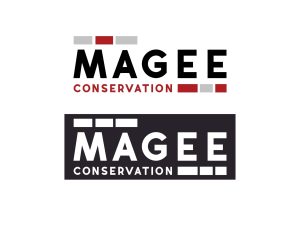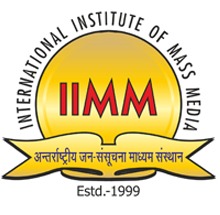4

+
years in Marketing

Looking for a Digital Manager?
Strategic digital manager specializing in branding, social media mastery, SEO optimization, and ROI-driven Strategy.
-
 90%
90%
-
 100%
100%
-
 90 %
90 %
What Can I Do
Here's my comprehensive suite of services designed to elevate your brand's identity and presence in the market.
-

Branding
I offer a range of services to boost your brand's identity and market presence, from logo design to creative content, leaving a lasting impact on your target audience.
-

Strategy
Elevate your online presence with my strategic branding expertise. I'll help you define and communicate your unique identity to leave a memorable impression on potential employers
-

Digital Marketing
Boost your online presence with my digital skills, specializing in social media and PPC campaigns. I'll help you connect with your audience and drive results for your online ventures.
-

Website Development
I create user-friendly and visually appealing websites that align with your goals, ensuring your online presence makes a powerful impact.

Latest Projects
My approach is simple, I help in increasing sales and build brand image in the mind of the customers.
-
 Details
DetailsAIBE
 At Shority, we had the privilege of collaborating with AIBE, a leading institution dedicated to excellence in education based in Gurugram, India. It prepares students for competitive exams like IELTS, CLAT, LSAT, Spoken English & personality development. Services offered by Shority are as follows:
At Shority, we had the privilege of collaborating with AIBE, a leading institution dedicated to excellence in education based in Gurugram, India. It prepares students for competitive exams like IELTS, CLAT, LSAT, Spoken English & personality development. Services offered by Shority are as follows:- WordPress Website Development
- E-comm payment gateway setup
- SEO PPC
- Social Media Management
- Lead Generation




-
 Details
DetailsMagee Conservation
 During my time at Brand You, I had the privilege of working with Magee Conservation and Restoration, the leading specialist in building restoration, conservation and preventative maintenance of Dublin’s most iconic buildings, including protected structures.
During my time at Brand You, I had the privilege of working with Magee Conservation and Restoration, the leading specialist in building restoration, conservation and preventative maintenance of Dublin’s most iconic buildings, including protected structures.- Branding – Website, Graphics, Content
- Social Media Planning & Management
- Brochure
- Brand Guideline Book




-
 Details
DetailsShrimat Construction
 At Shority, we had the privilege of collaborating with Shrimat Construction & Interiors, an Engineering Procurement Construction Company specializing in Architectural planning, construction, and Interior designing, based in Bhopal, India. Services offered by Shority are as follows:
At Shority, we had the privilege of collaborating with Shrimat Construction & Interiors, an Engineering Procurement Construction Company specializing in Architectural planning, construction, and Interior designing, based in Bhopal, India. Services offered by Shority are as follows:- Meta Ad Campaign
- SEO PPC
- Social Media Management
- Lead Generation




Creative Timeline
Learn about my education & experiences.
-
-
Branding & Marketing
Work At ShorityA self-initiated business where I help business with my digital skills.
-
2020-now
-

-
-
-

Brand Manager, Ireland
Strategy, social media & PPCWorked on Visual identity, brand creation, social media plan and ran Ad Campaigns of Irish Brands.
-
2021-2022
-

-
-
-

Masters - Advertising & Public Relations
Indian Institute of Mass Communication, Delhi -
Class of 2021
-

-
-
-

Intern
Google for Startup, DelhiPress Release, Media Outreach & ran PPC campaigns
-
2020
-

-
-
-

Bachelors- Journalism & Mass Communication
International Institute of Mass Media, Delhi -
2017-2020
-

-

My Photographic Journey


In Orchha’s historic streets, my lens captures the unscripted beauty of everyday life, preserving the essence of a bygone era through the candid narratives unfolding on its ancient cobblestone paths.
Bottom Left – India Gate, Delhi




Latest News & Articles
Explore our latest blogs and articles for insightful perspectives on emerging trends and expert opinions that will keep you informed and inspired.
-
Welcome to your SEO learning journey! Whether you’re a business owner, marketer, or curious individual, understanding search engine optimization (SEO) is essential in today’s digital landscape. In this beginner-friendly guide, we’ll break down the basics of SEO and provide actionable tips to enhance your website’s visibility on search engines.
1. What is SEO?
SEO is the practice of optimizing your website to improve its visibility in search engine results. When users search for specific keywords or phrases, search engines like Google aim to deliver relevant and valuable content. By implementing SEO strategies, you can increase your chances of ranking higher in search results.
2. Moz Low’s Hierarchy of SEO Needs
Think of SEO as a pyramid with foundational elements. Here’s our version, inspired by Maslow’s hierarchy of needs:
- Crawl Accessibility: Ensure search engines can read your website.
- Compelling Content: Create valuable content that answers users’ queries.
- Keyword Optimization: Use relevant keywords to attract both users and search engines.
- User Experience (UX): Optimize load speed and create a seamless experience.
- Share-Worthy Content: Earn links and citations by producing valuable content.
- Title, URL & Description: Craft compelling snippets to boost click-through rates.
- Snippet/Schema Markup: Stand out in search engine results.
3. Seven Steps to Successful SEO
Let’s dive into practical steps:
Step 1: Crawl Accessibility
Ensure search engines can crawl and index your website. Use tools like Google Search Console to check for crawl errors.
Step 2: Compelling Content
Create content that directly addresses users’ queries. Valuable content keeps visitors engaged and encourages sharing.
Step 3: Keyword Optimization
Research relevant keywords related to your industry. Use them naturally in your content, titles, and meta descriptions.
Step 4: User Experience (UX) Matters
A fast-loading website with intuitive navigation enhances user experience. Optimize images and minimize code to improve load speed.
Step 5: Share-Worthy Content
Produce content that others want to share. High-quality articles, infographics, and videos attract links and citations.
Step 6: Optimize Titles, URLs & Descriptions
Craft compelling titles, clear URLs, and meta descriptions. These elements influence click-through rates in search results.
Step 7: Snippet/Schema Markup
Use structured data (schema markup) to enhance your snippets. Rich snippets stand out and provide additional context.
4. Explore the Chapters
To delve deeper, explore the following chapters:
- Chapter 0: Quick Start SEO Guide: Set up your site for SEO success.
- Chapter 1: SEO 101: Understand the basics and why SEO matters.
- Chapter 2: How Search Engines Work: Learn about crawling, indexing, and ranking.
Remember, SEO is an ongoing process. Combine knowledge with practice, and you’ll become a savvy SEO. 🚀
-
In the ever-evolving digital landscape, effective marketing campaigns play a pivotal role in driving business growth and brand recognition. Whether you’re a seasoned marketer or just dipping your toes into the digital waters, understanding the key elements of successful campaigns is essential. In this SEO blog, we’ll explore these elements and showcase inspiring real-world examples that have left their mark.
1. Key Elements of a Digital Marketing Campaign
1.1 Search Engine Optimization (SEO)
SEO is the bedrock of any successful digital marketing strategy. It involves optimizing your website to improve its visibility in search engine results. By ranking higher, you attract qualified leads and drive revenue. Key SEO strategies include creating quality content, streamlining site design, and earning reputable backlinks.
1.2 Pay-Per-Click (PPC) Advertising
PPC advertising ensures your presence in search results while organic rankings are established. It involves paid ads, display ads, and sponsored content. Effective PPC campaigns require budget allocation, precise audience targeting, and continuous optimization.
1.3 Content Marketing
Content lies at the heart of digital campaigns. Engaging blog posts, videos, infographics, and social media content resonate with audiences. Remember, valuable content drives traffic, engagement, and conversions.
1.4 Social Media Marketing
Harness the power of social platforms. Create compelling content, engage with your audience, and build brand loyalty. Successful campaigns leverage platforms like Facebook, Instagram, Twitter, and LinkedIn.
1.5 Email Marketing
Don’t underestimate the impact of well-crafted emails. Personalized, relevant emails nurture leads, encourage conversions, and foster customer relationships. Segmentation and automation are key here.
1.6 Analytics and Tracking
Measure campaign success using tools like Google Analytics. Monitor metrics such as traffic, conversions, bounce rates, and user behavior. Data-driven decisions lead to better outcomes.
2. Real-world examples of Successful Digital Marketing Campaigns
Let’s dive into inspiring case studies:
- Coca-Cola’s “Share a Coke” Campaign:
- Personalized Coke bottles with individual names.
- Encouraged social sharing and engagement.
- Result: Increased brand visibility and sales.
- Nike’s “Dream Crazy” Ad Campaign:
- Featured Colin Kaepernick, sparking conversations.
- Bold, socially impactful messaging.
- Result: Brand relevance and cultural resonance.
- Old Spice’s “The Man Your Man Could Smell Like” Campaign:
- Hilarious, memorable ads featuring Isaiah Mustafa.
- Viral on social media.
- Result: Revived brand image and boosted sales.
3. Conclusion
Crafting successful digital marketing campaigns requires creativity, data analysis, and adaptability. Learn from these examples, tailor strategies to your business, and keep evolving. Remember, the digital world is dynamic—stay agile and thrive!
- Coca-Cola’s “Share a Coke” Campaign:
-
In today’s fast-paced digital landscape, having a well-defined digital marketing strategy is crucial for businesses aiming to thrive online. Whether you’re a startup, a small business, or an established enterprise, strategic planning ensures that your marketing efforts align with your goals and resonate with your target audience. Let’s delve into the importance of a robust digital marketing strategy and outline a step-by-step guide to create and implement one.
Why Do You Need a Digital Marketing Strategy?
- Clarity of Purpose: A strategy provides a clear roadmap for achieving your marketing objectives. It ensures that everyone in your team understands the direction and purpose of your digital efforts.
- Resource Optimization: With limited resources, you need to allocate them wisely. A well-defined strategy helps prioritize activities, channels, and investments effectively.
- Consistency and Cohesion: A strategy ensures consistency across all digital touchpoints. Whether it’s your website, social media, or email campaigns, a cohesive approach strengthens your brand identity.
- Adaptability: The digital landscape evolves rapidly. A strategy allows you to adapt to changes, experiment, and stay ahead of the curve.
Step-by-Step Guide to Creating a Digital Marketing Plan
1. Situational Analysis
Before diving into tactics, assess your current situation:
- Internal Analysis (SWOT): Understand your strengths, weaknesses, opportunities, and threats.
- External Analysis: Study market trends, competitors, and customer behavior.
2. Define Your Goals
Set clear, measurable goals aligned with your business objectives:
- SMART Goals: Specific, Measurable, Achievable, Relevant, and Time-bound.
- Example: Increase website traffic by 20% within six months.
3. Know Your Audience
Create detailed buyer personas:
- Understand their demographics, pain points, preferences, and behavior.
- Tailor your messaging to resonate with each persona.
4. Choose Your Digital Channels
Select the most relevant channels based on your audience and goals:
- Content Marketing: Create valuable content (blogs, videos, infographics).
- Paid Advertising: Invest in PPC, display ads, and social media ads.
- Email Marketing: Nurture leads and engage existing customers.
- Social Media: Choose platforms where your audience hangs out.
5. Develop Your Content Strategy
Plan your content creation and distribution:
- Content Calendar: Map out topics, formats, and publishing dates.
- SEO Optimization: Optimize content for search engines.
- Value Proposition: Clearly communicate what sets you apart.
6. Allocate Budget and Resources
Determine your budget for each channel:
- Paid Campaigns: Allocate funds for advertising.
- Tools and Software: Invest in analytics, automation, and tracking tools.
- Human Resources: Assign responsibilities and roles.
7. Set Metrics and KPIs
Define key performance indicators (KPIs):
- Traffic: Website visits, unique visitors.
- Conversion Rate: Leads, sales, sign-ups.
- Engagement: Social media likes, shares, comments.
8. Create an Action Plan
Break down tasks and deadlines:
- Campaign Launch Dates: Specify when each campaign will run.
- Content Creation Schedule: Assign responsibilities for content production.
- Regular Review Points: Evaluate progress and adjust as needed.
9. Monitor and Optimize
Use analytics tools to track performance:
- Google Analytics: Measure traffic, bounce rates, and conversions.
- Social Media Insights: Monitor engagement and audience growth.
- A/B Testing: Experiment with different approaches.
10. Stay Agile
The digital landscape evolves. Be ready to adapt, learn, and iterate:
- Feedback Loop: Gather insights from campaigns and adjust strategies.
- Competitor Analysis: Keep an eye on what others are doing.
Remember, a digital marketing strategy isn’t static—it’s a living document that evolves with your business and the digital ecosystem. Regularly review, refine, and stay agile to achieve digital marketing success!




















